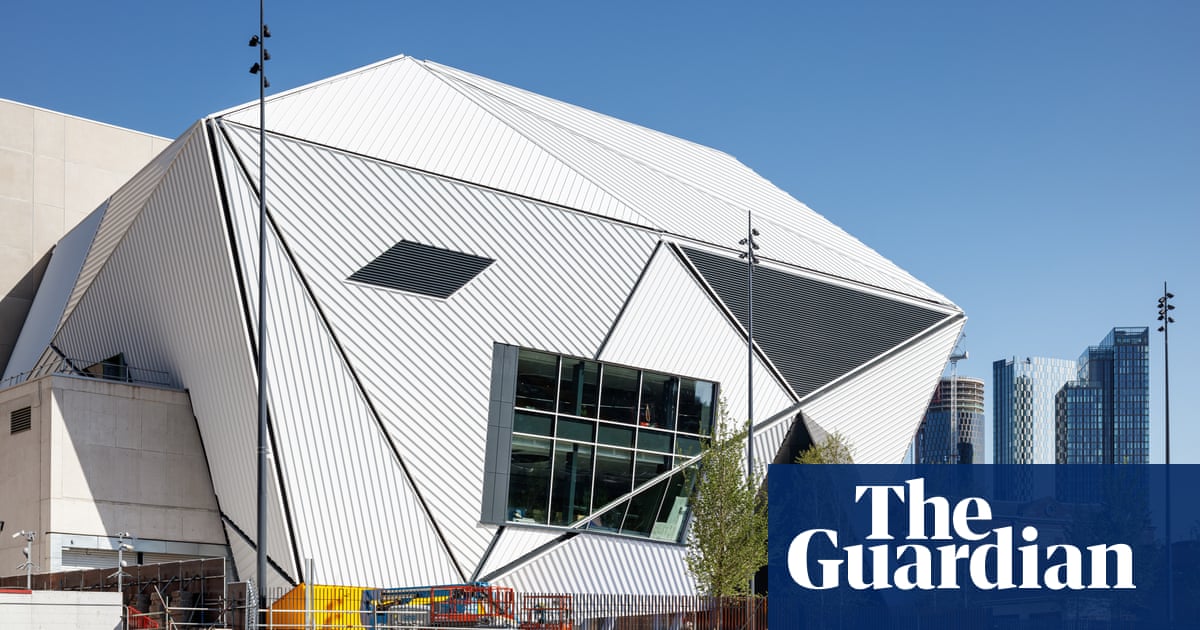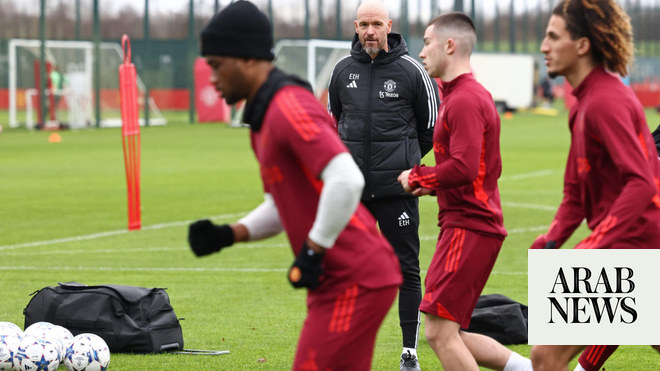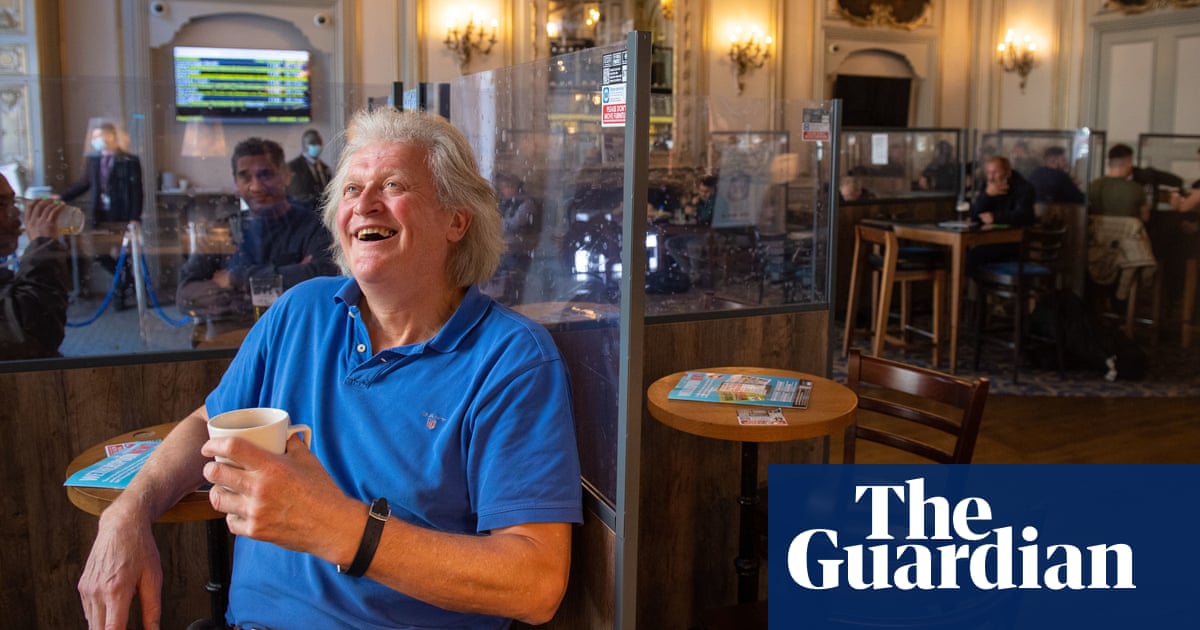
Agiant yellow pumpkin, pink tentacles reaching to the ceiling and a towering pigtailed girl. The scale of Yayoi Kusama’s spotted inflatables in You, Me and the Balloons is impressive, as is the size of the 21 metre-high cavernous main exhibition space housing them at Manchester’s Aviva Studios. The north finally has its version of the Tate Modern’s Turbine Hall.
The new cultural institution will officially open in October once the rest of the building is complete, but is having a soft launch this summer as it hosts the Manchester international festival. The building will host visual art shows, theatre, music and dance performances and offer training to support young people into the creative industries. Despite only being accessible to the public for a month, it has already encountered some contention.
Initially billed as “Factory International” after the arts organisation that runs the site, it was announced this June that the venue was changing its name when the insurance, pension and wealth company bought the naming rights for £35m. As far as corporate branding goes, the presentation of the new name is tasteful – on the exterior of the building, there isn’t an Aviva logo in sight. However, some have criticised the move as the antithesis of the city’s DIY culture, making it a potential public relations risk for Manchester city council, which owns the building, and Factory International.
Over the past decade, artists and audiences have been taking cultural institutions to task over perceived “artwashing”. Following protests, a number of companies stepped away from funding them: the British Museum, the National Portrait Gallery and the Royal Shakespeare Company have cut sponsorship ties with BP; BAE Systems pulled out as a partner of the Great Exhibition of the North after an online petition. London music venue the Roundhouse, the Donmar Warehouse theatre, the National Portrait Gallery and the British Museum also distanced themselves from the Sackler Trust, the philanthropic vehicle for the family who made their money via Purdue Pharma, the company accused of contributing to the US opioid crisis.
However, this idealism has come at a time when the financial situations of cultural institutions are ever more precarious. In the UK, there are three potentially large funding pots for the arts: government, local authority and private. Anyone who has lived through the past 13 years in Britain will be able to tell you that two of those sources have drastically shrunk. It was the Conservative chancellor George Osborne who, in 2014, announced that Manchester’s new cultural hotspot would be named after Factory Records, noting that “anyone who is a child of the 80s will think that is a great idea”, but it was also Osborne who cut Arts Council England funding by 30% in 2010 and “hollowed out” local council budgets. Manchester city council has seen a loss of £420m compared with pre-austerity years. As a result, cultural institutions have had to increase their reliance on corporate sponsors.
Recent economic shocks haven’t helped the situation either. Back in 2017, the cost of Aviva Studios was estimated at £110m, but due to the pandemic and inflation, that figure nearly doubled to £210m. The city council approved a budget increase, but with the caveat that there was “scope for the council to recover a significant proportion of these capital costs through a long-term naming rights agreement for Factory International”.
Handing over naming rights is a high-risk but high-yield strategy. The UK has a long history of art galleries, museums and their wings being named after philanthropists. Down the road in Liverpool, the Tate is named after 19th-century industrialist Henry Tate who made his fortune as a sugar refiner. However, while music venues – such as Manchester’s AO Arena, O2 venues and the soon-to-be-opened Co-op Live – have been more willing to engage with big corporate sponsorship deals, art galleries and museums have historically preferred to keep companies at a greater distance, only named as sponsors of exhibitions.
Aviva Studios may mark a shift in the sector, especially if the economic climate continues to be unfavourable for arts institutions. Manchester city council needed funding for the build and its projects, a representative tells me, but they needed to find the right business. Both the council and Factory International took candidates through their ethics committees and decided that Aviva would be the best fit. According to Factory International’s artistic director and chief executive, John McGrath: “We all knew that if there was to be a naming rights sponsor it had to be someone we could stand behind, and had been through proper ethical procedures, and there had been proper discussions about our values.”
On the surface, Aviva, a safe – if a little dull – household name is a great fit. It has a new chief executive officer, Amanda Blanc, who has spoken out against sexism in the industry, and its asset management arm, Aviva Investors, has a reputation for responsible investments. The company has also committed to net zero operations and investments by 2040. However, we’re in 2023 not 2040, and the company does currently own shares and bonds in some fossil fuel companies.
The British Museum’s chairman of trustees, Richard Lambert, made a prescient comment about the role of financial institutions when seeking to justify BP’s patronage back in 2019: “You can’t put a line around BP. If you don’t take money from BP, would you take money from banks who support oil companies?”
If art is a mirror we hold up to society, then the renaming of Aviva Studios is an accurate reflection of the UK, and the wider world. “From my perspective, if we lived in a perfect world where arts and culture were funded properly … then it might be a different conversation,” says Manchester city council leader Bev Craig.
The space already looks like a success for the city. The building has quickly been adopted by local people, something Aviva hopes to build upon with a £10 ticket scheme to all shows. On a Saturday afternoon in July, a group of tourists shared pastries in the cafe, elderly men sat reading newspapers in the foyer, and outside between the venue and the River Irwell, children ran around benches. Maybe over time Mancunians will come up with their own name for the building.
Half an hour’s walk away, the Whitworth gallery – also named after a philanthropist – is hosting the exhibition Economics the Blockbuster as part of Manchester international festival, about the ways in which artists reimagine and reshape our economy. As part of the show, the gallery’s staff and the Centre for Plausible Economies have drawn alternative models of art gallery and museum economies.
On one side, there is the “Museum of the 1%” and on the other, the “Constituent Museum”; one serves private patrons and sponsors, and the other the local community. In reality, cultural institutions balance the two, taking funding from private sources in order to be able to pay for local community projects, even if this runs the risk of engaging with controversial industries. For now, it’s up to arts institutions to live in one world while imagining another.












